Is YouTube Bad for Your Kids?
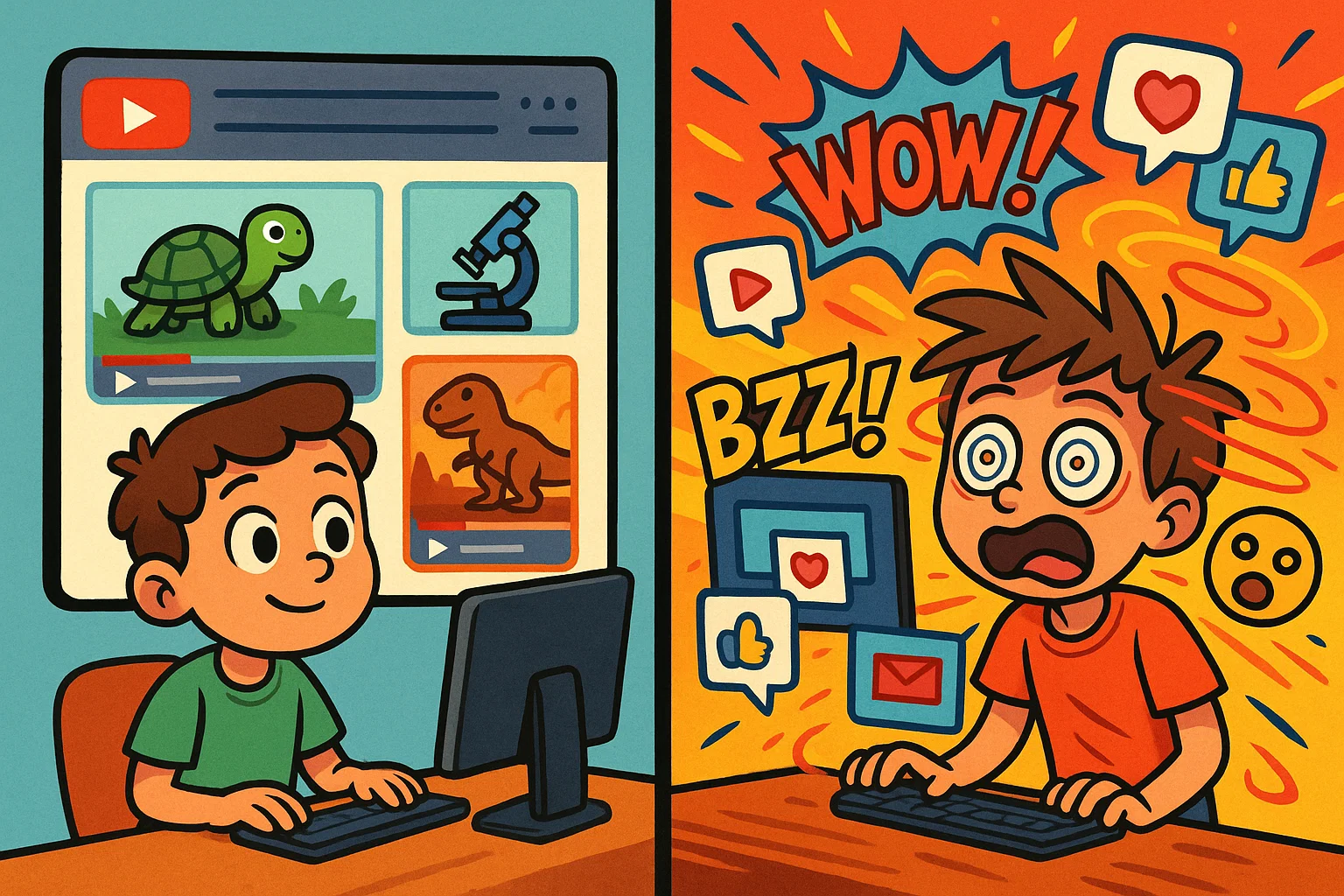
Platforms like YouTube are becoming a significant element in family life, prompting crucial questions about their influence on children’s growth, actions, and safety. Research reveals a complex interplay between how much YouTube children consume and their development.
“It’s not just how much time children spend with screens, but what they’re watching and how that content is structured.”
Dr. Dimitri Christakis – Pediatrician & Researcher
Evidence points to both potential advantages and considerable worries. Early and excessive use has been linked to emotional and behavioural difficulties. However, controlled and limited interaction can foster learning and creativity in particular situations.
Pros of YouTube for Kids
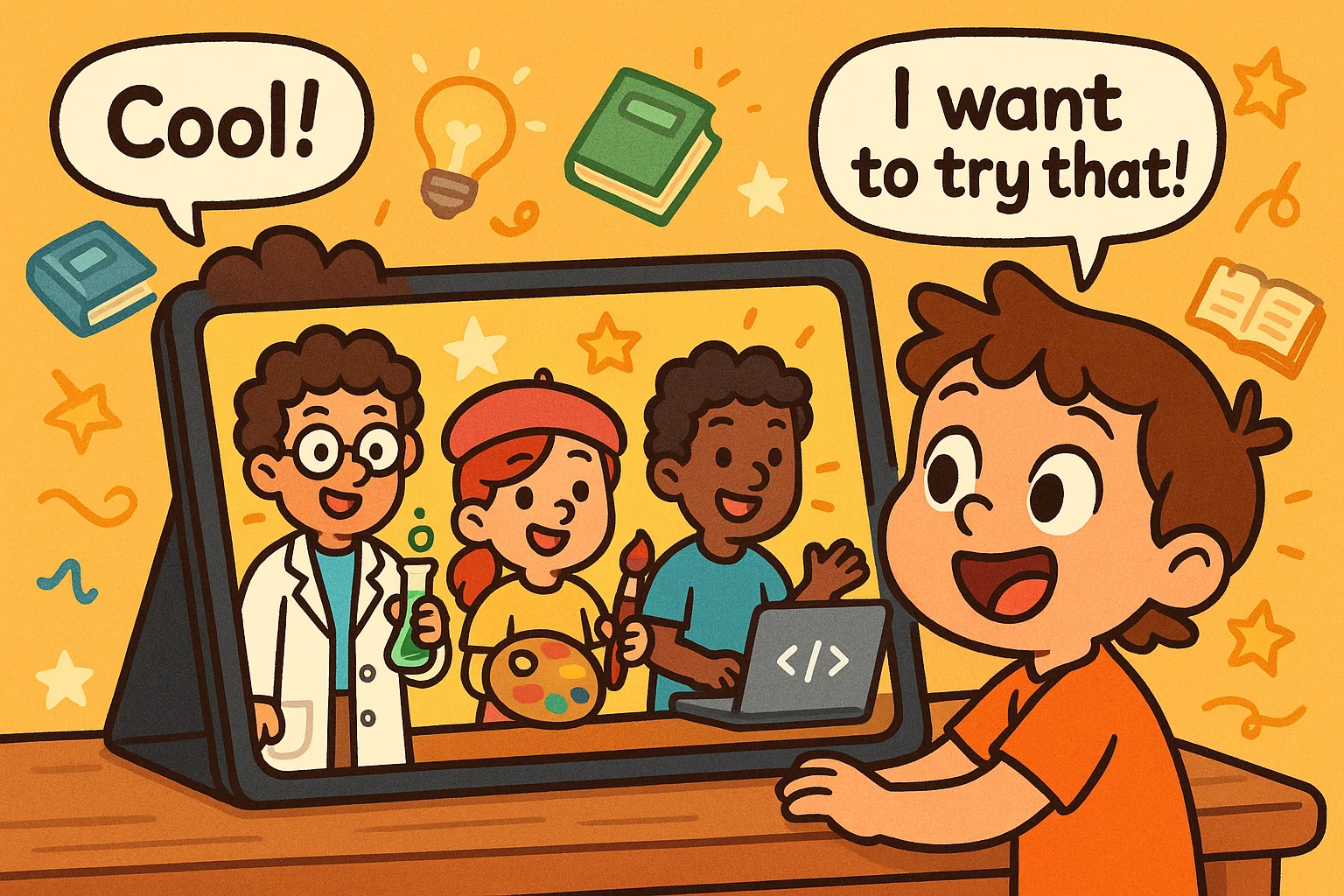
When utilised thoughtfully and under suitable guidance, YouTube can act as a fount of valuable knowledge and aid a child’s development. The platform provides a broad spectrum of material that can be both educational and motivational.
✔️ Access to diverse learning content
YouTube is home to numerous channels focusing on education, science, arts, and other knowledge areas. Children can discover video tutorials for school subjects, study foreign languages, delve into the natural world, or acquire new creative abilities.
Such content, particularly when created by educational specialists, can complement formal schooling and broaden a child’s understanding.
✔️ Positive role models and inspiring creators
Amongst the vast quantity of channels, you can find creators who model respectful conduct, encourage inventiveness, scientific exploration, or physical activity. These content creators can serve as positive figures for children to admire, potentially prompting them to pursue their own objectives and develop admirable qualities.
✔️ Exploring identity and interests
Video material allows children to investigate various subjects and find what truly captivates them. Whether it is history, coding, cooking, or sketching, YouTube provides resources that can help a child explore their preferred topics more deeply. This journey aids self-discovery and might even suggest paths for future pastimes or potential professional directions.
Cons of YouTube for Kids
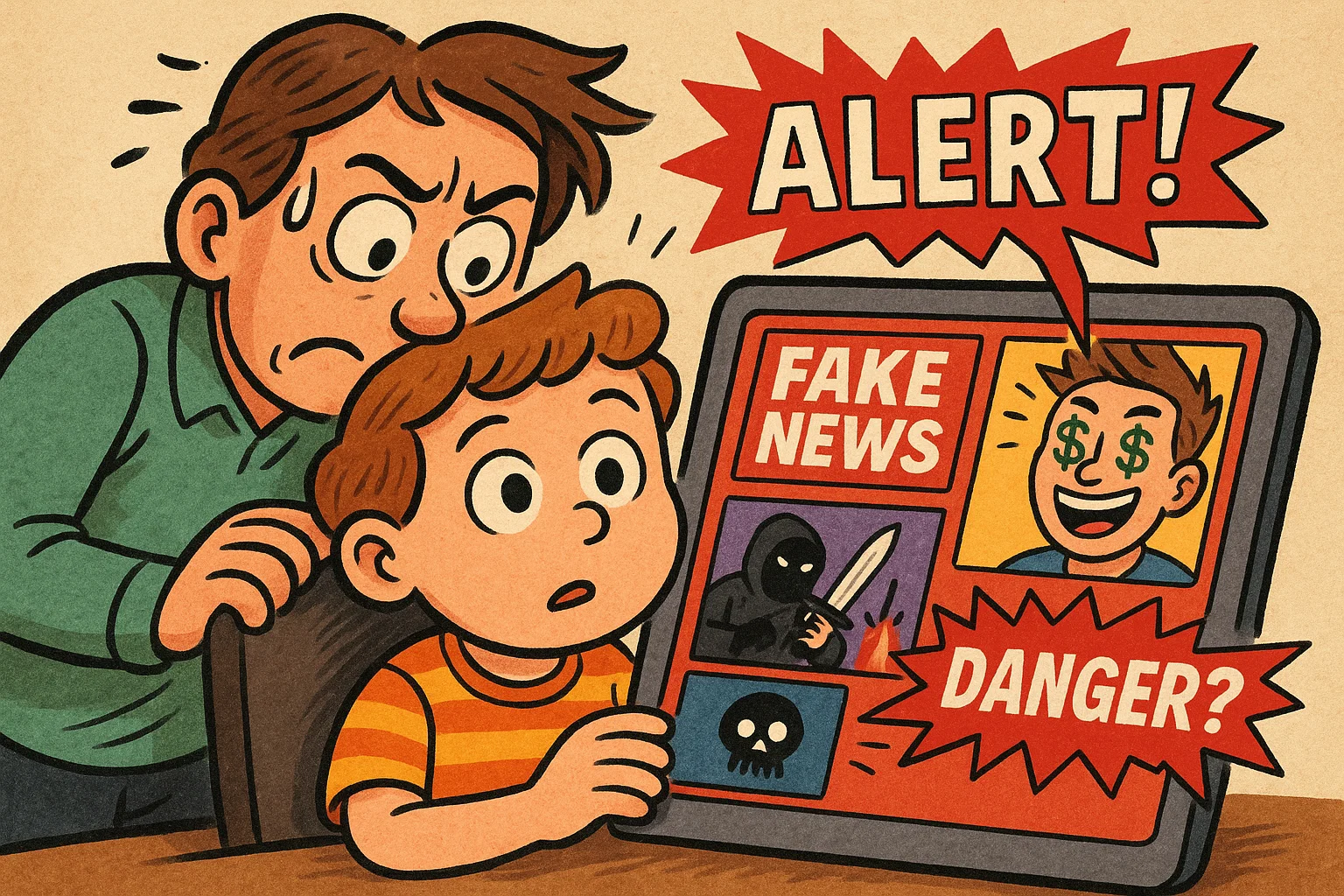
Alongside the benefits, there are considerable dangers linked to unchecked YouTube use. These encompass the possibility of encountering unsuitable material, the impact of algorithms, and the potential formation of inaccurate views of reality.
❌ Exposure to inappropriate or violent content
Even with existing filtering methods, children can still encounter videos featuring unsettling, frightening, or clearly age-inappropriate themes. Content that appears harmless initially might contain concealed aggressive messages or show dangerous conduct. This demands constant watchfulness from parents.
❌ Spread of misinformation
YouTube operates as a self-publishing service, meaning most channels lack rigorous fact-checking. Children might come across videos presenting false information as fact, making it hard for them to differentiate truth from falsehoods without guidance. The platform’s design can unintentionally boost misleading narratives.
❌ Influence of unregulated personalities
Many well-liked YouTubers function without formal oversight concerning the messages they share or their actions. Children might idolise creators who display dubious values, promote unhealthy routines, or engage in questionable acts, possibly affecting their own conduct and moral understanding.
❌ Unrealistic lifestyle aspirations
A considerable amount of content on YouTube depicts idealised ways of living, often centred on wealth, possessions, or continuous entertainment. Seeing these seemingly effortless or extravagant realities can create pressure and disappointment for children when their own lives do not match these often-unrealistic depictions. This might affect their contentment.
Usage Patterns and Exposure Trends
Research indicates that YouTube exposure begins remarkably early in childhood. According to a study tracked by K-CURE (Korean Children’s Understanding, Recognition, and Empathy study), over 20% of young children were using YouTube by age four.
Previous studies examining children six years or younger found that first exposure typically occurred before two years of age. This trend suggests that the younger the population studied, the earlier the age of initial YouTube exposure tends to be.
Children’s interactions with YouTube evolve as they develop. Even at six months, infants show engagement with melodic music videos, attempting to imitate movements. By 12-24 months, children begin identifying characters on screens. Two-year-olds show particular interest in advertisements featuring familiar food products. These progressions demonstrate how children’s YouTube engagement patterns mature.
The K-CURE study found that children’s mean daily YouTube usage exceeded two hours. They averaged about 69 minutes per day, with usage occurring approximately five days per week. Content categories most frequently watched include:
- Gaming videos
- Do-it-yourself (DIY) tutorials
- Film-related content
- Animations
This significant time investment raises concerns about displacing other developmental activities.
Research has established a troubling correlation between early exposure and subsequent usage patterns. Children who begin using YouTube at younger ages tend to engage with the platform more frequently as they grow older. This pattern of intensifying usage suggests that early habits may persist, potentially amplifying both positive and negative effects over time.
YouTube Kids Platform Features
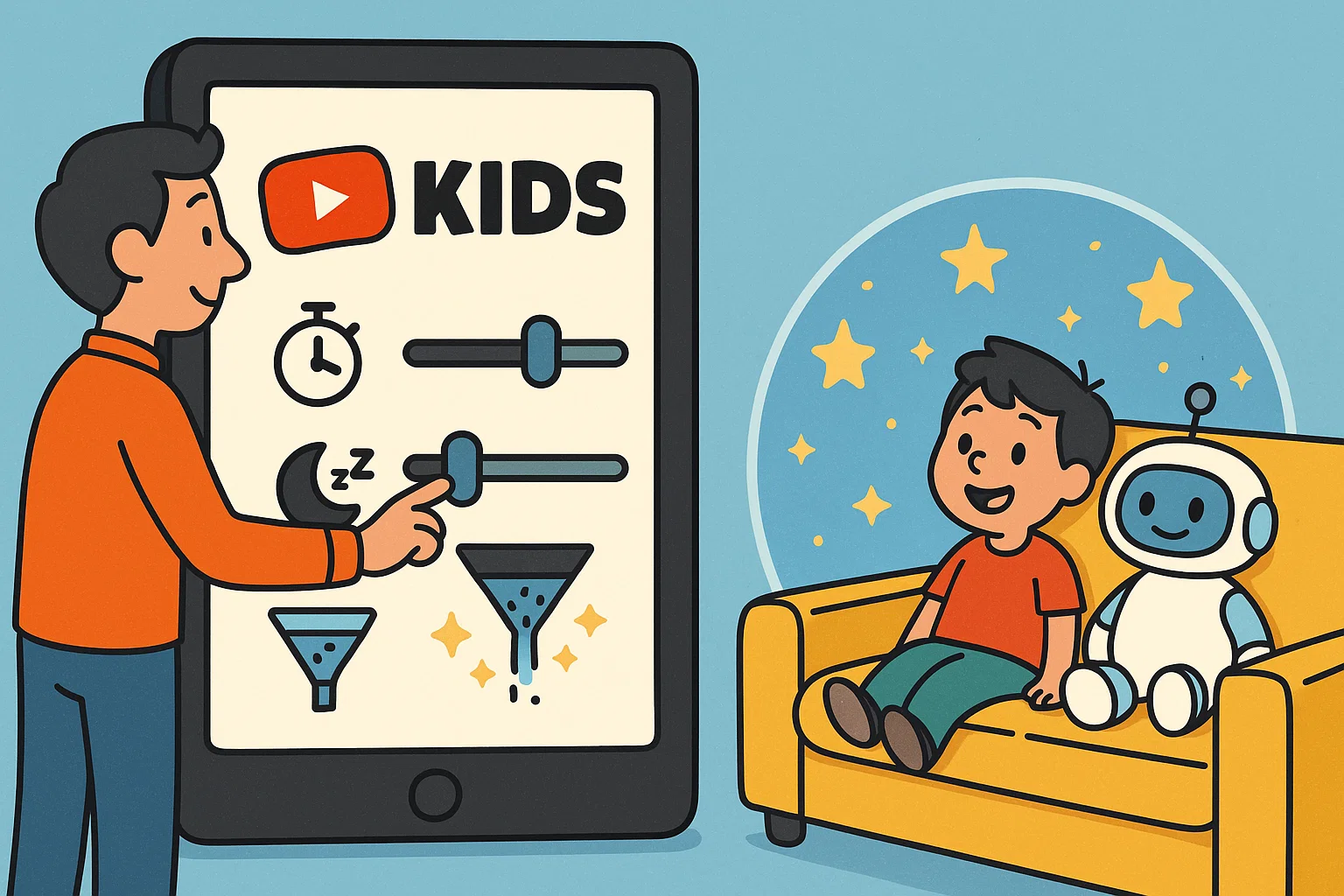
YouTube offers a dedicated platform, YouTube Kids, designed with younger audiences in consideration. Grasping its features, along with its limitations, is crucial for using it effectively.
Content filtering and age-appropriate curation
YouTube Kids employs algorithms and human selection to filter content, aiming to show videos suitable for different age groups based on subjects, language, and themes. The goal is to establish a safer setting by restricting exposure to material deemed unsuitable for children. This automated system is regularly enhanced.
Screen time limits and parental control settings
The platform includes built-in functions allowing parents to set timers to control viewing time, manage usage hours, and even activate a ‘sleep mode’. These controls offer parents practical means to manage their child’s viewing habits directly within the app.
Limitations and loopholes in safety filters
It is essential to acknowledge that automated filtering systems are not flawless. Weaknesses and ways around them have been found over time, occasionally permitting inappropriate or upsetting content to bypass safety filters. Parents should not depend solely on these features and must stay actively involved in monitoring.
Expert Advice on Screen Time Management
Handling children’s digital consumption is a widely discussed topic among child psychologists and educators. Suggestions typically focus on balance, context, and parental involvement.
Suggested daily screen limits by age
Recommendations from health bodies and specialists often propose specific screen time ranges based on age group.
| Age Group | WHO Screen Time Guideline |
| Under 1 year | No screen time |
| 1-2 years | No screen time for 1-year-olds |
| < 1 hour for 2-year-olds (less preferred) | |
| 3-4 years | < 1 hour per day |
These restrictions stem from worries about sedentary behaviour, which WHO identifies as a risk factor for global mortality and a contributor to rising obesity.
WHO emphasises that “achieving health for all means doing what is best for health right from the beginning of people’s lives”. Reducing screen time and increasing physical activity and quality sleep are seen as ways to improve children’s health outcomes.
Importance of co-viewing and discussion
Watching YouTube material alongside your child provides chances for conversation and learning. By co-viewing, parents can assist children in understanding what they see, questioning dubious material, and reinforcing positive messages.
Research in preschool settings has documented how this can support positive conversations. This shared experience also enables parents to understand their child’s content interests.
Creating a healthy digital routine
Integrating YouTube safely involves setting up balanced routines including physical play, reading, social interaction, and creative activities. Instead of permitting spontaneous, unlimited access, scheduling specific times for screen use within a wider daily structure can promote healthier practices.
YouTube’s Impact on Child Psychology
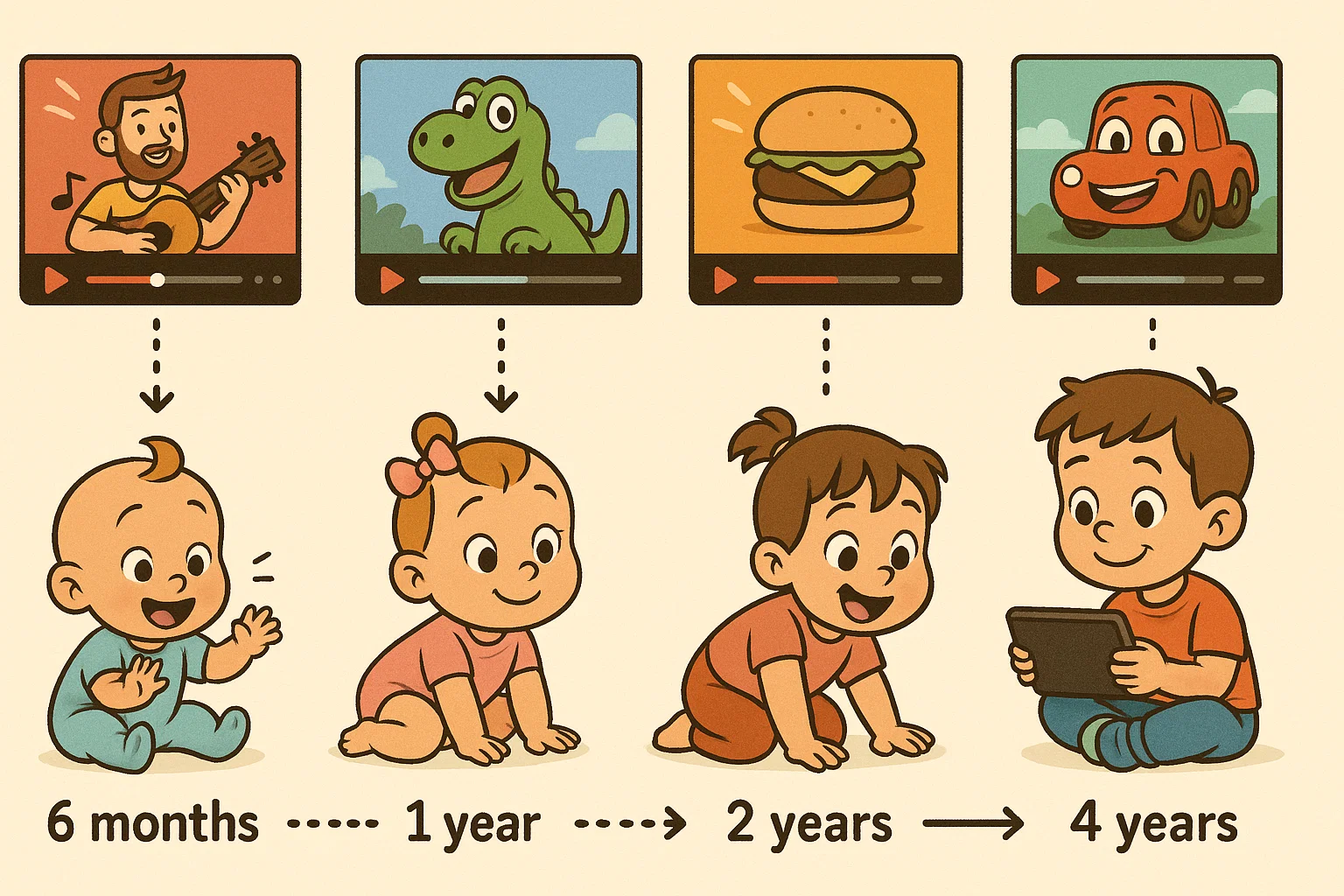
Exposure to digital content, particularly the format and themes common on YouTube, can affect young viewers’ psychological development. This influences their emotional control, behaviour patterns, and social growth.
Here are some potential psychological effects:
- Disruptive behaviour and attention issues
- Anxiety, fear, and overexposure to adult themes
- Body image and self-esteem distortion
Disruptive behaviour and attention issues
The fast pace, rapid edits, and constant stimulation in many popular YouTube videos may be linked, according to some research, to difficulties with concentration and focus. While not a sole cause, this format differs significantly from traditional media and could potentially contribute to shorter attention spans or increased restlessness. Other research on general screen time has similarly found connections to poorer thinking and impaired emotional/behavioural regulation.
Anxiety, fear, and overexposure to adult themes
Repeated viewing of sensational news clips, dramatic narratives, or content containing mild danger or mature emotional subjects can heighten anxiety or fear, especially in younger or more sensitive children. Algorithms can sometimes direct children towards content that is emotionally overwhelming or introduces worries they are not developmentally ready for.
Body image and self-esteem distortion
Many popular creators present idealised appearances, lifestyles, or filtered realities that do not reflect typical life. Consistent viewing of content focused on physical perfection, consumerism, or curated happiness might negatively affect children’s self-perception, potentially leading to dissatisfaction or impacting their self-esteem.
Signs of Negative Influence from YouTube
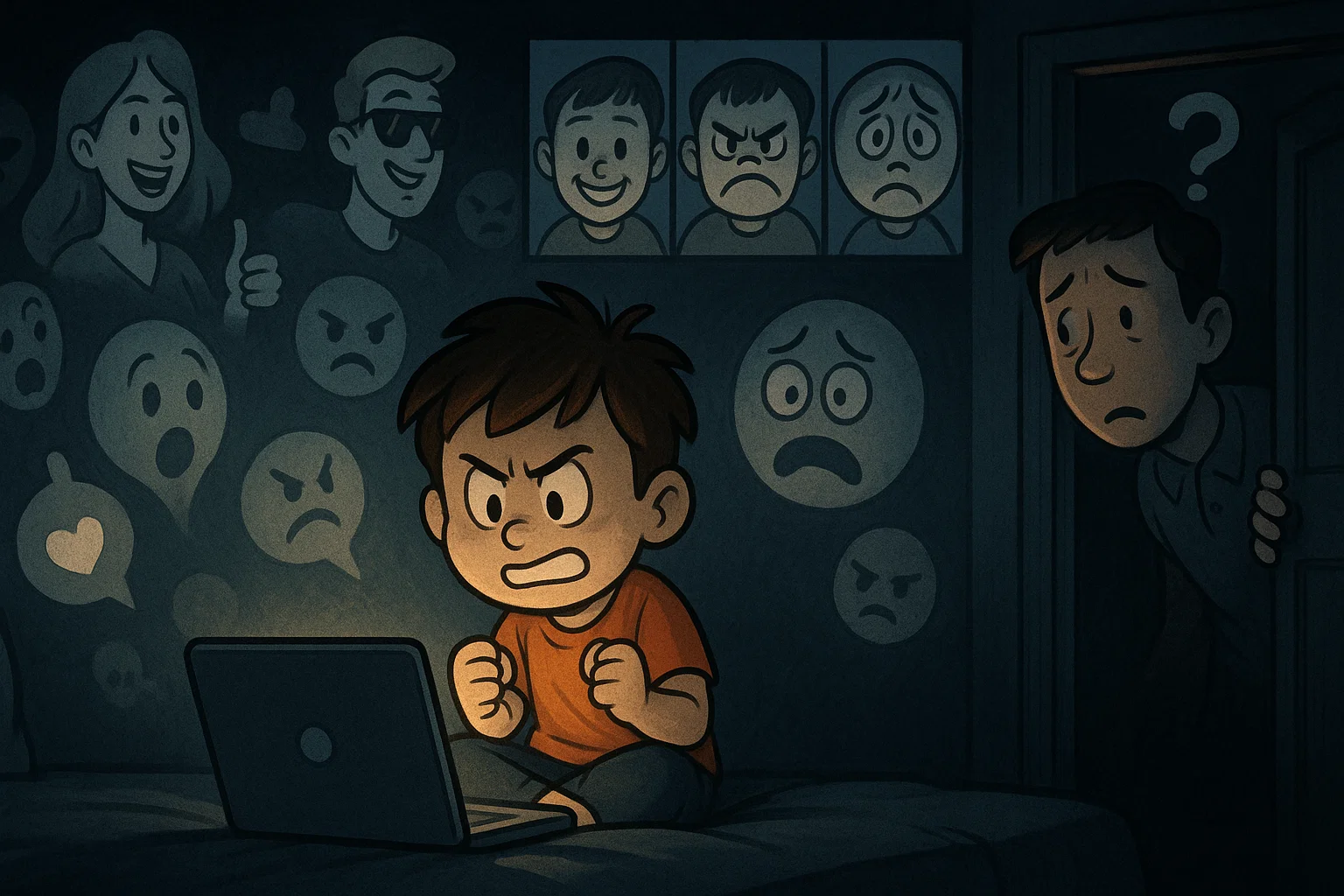
Parents should be mindful of potential changes in behaviour that might suggest YouTube content is adversely affecting their child. Recognising these signals early allows for prompt action.
Here are some behavioural red flags:
- Sudden mood swings or social withdrawal
- Obsession with creators or imitation of harmful behaviour
- Increased defiance or argumentativeness
Let’s look at these in more detail:
Sudden mood swings or social withdrawal
Notable shifts in a child’s emotional state, such as increased irritability or sadness, or a sudden unwillingness to participate in social activities with family or peers, may indicate a problem. This could potentially be linked to themes in the content they are watching or negative online interactions they might be experiencing.
Obsession with creators or imitation of harmful behaviour
Developing intense focus on particular YouTubers, sometimes leading to attempts to mimic their every action or speech, can be a warning sign. If the behaviour being copied is negative, aggressive, or involves dangerous stunts seen online, it requires immediate attention. The K-CURE study identified associations between early YouTube use and emotional/behavioural problems.
Increased defiance or argumentativeness
Some material, especially featuring individuals who challenge norms or show disrespectful attitudes towards figures of authority, could potentially affect a child’s own behaviour. An unexplained rise in defiance, arguing, or questioning reasonable rules might, in some instances, be related to adopting attitudes observed online.
Safety Tips for Parents Using YouTube
Taking proactive measures is crucial for ensuring a child’s YouTube use is as healthy and secure as possible. Implementing available parental controls and maintaining open communication are key approaches.
Consider these practical actions:
- Activating restricted mode and supervised accounts
- Choosing quality educational channels
- Checking uploads, thumbnails, and comments
Let’s explore each tip:
Activating restricted mode and supervised accounts
Using safety features on standard YouTube, like Restricted Mode, can help filter out potentially adult material. For younger children, setting up a Supervised Account through Google offers more fine-grained control over content levels and viewing history. Parents can set time limits via the YouTube Kids app using a lock icon requiring a simple math problem to ensure it’s an adult.
Choosing quality educational channels
Parents can curate a list of approved channels offering high-quality, age-appropriate educational or enriching material. Focusing on channels with established reputations, positive feedback, and clear educational aims can help guide children towards beneficial viewing.
Checking uploads, thumbnails, and comments
Even on seemingly safe channels, it’s wise for parents to occasionally review recently watched videos, look closely at video thumbnails (which can sometimes mislead), and briefly check comment sections (on standard YouTube) for potential exposure to inappropriate language or themes. This offers insight into the actual content.
YouTube Versus Traditional Media
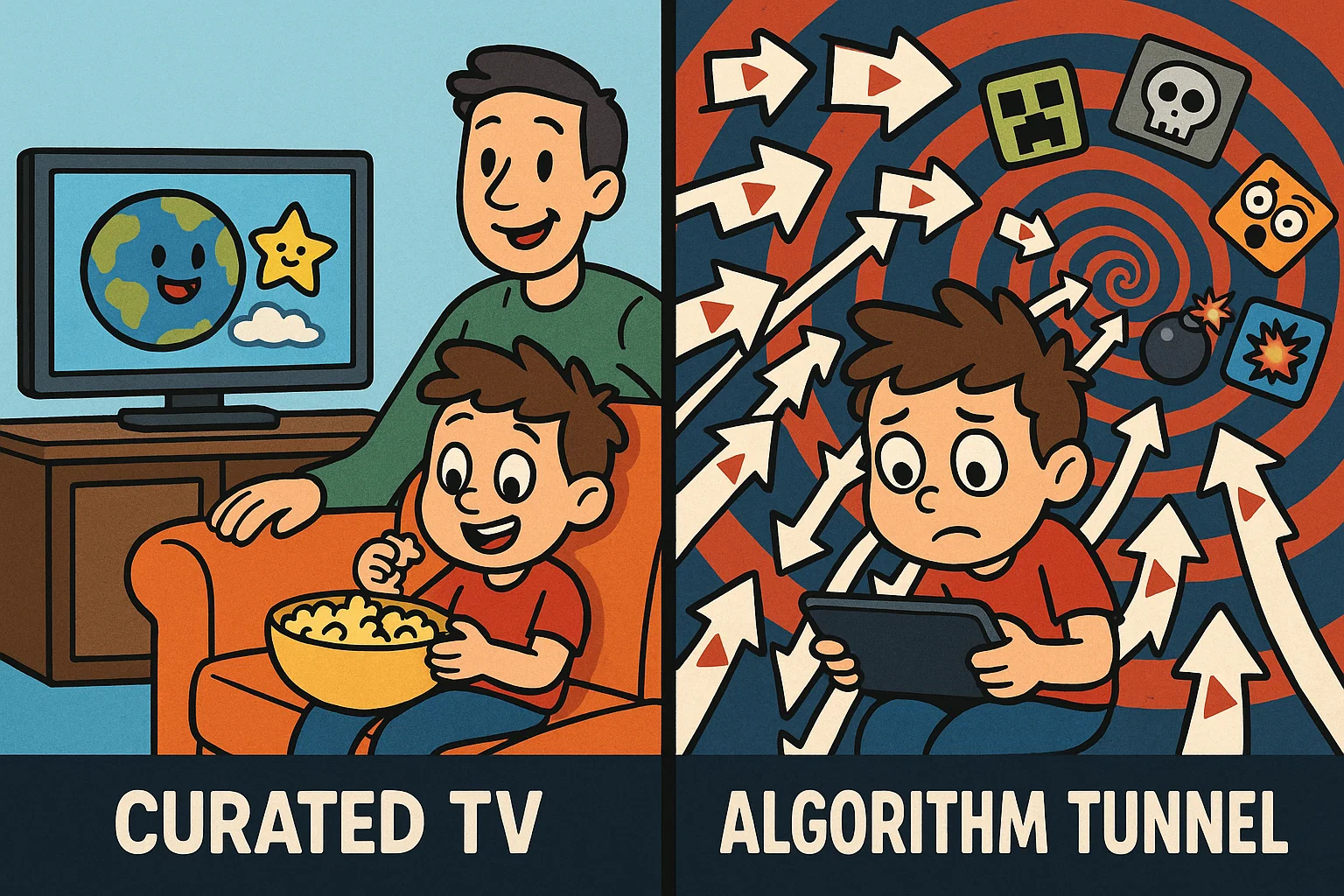
Comparing YouTube content with traditional media like television or films highlights key distinctions that affect children differently.
Algorithm-driven exposure vs curated shows
Traditional children’s TV programming is typically highly curated, regulated, and scheduled, with content produced for a target age group. YouTube, in contrast, uses algorithms to suggest content based on viewing history, potentially leading children down unpredictable paths to unvetted material—a clear difference.
Passive consumption vs interactive influence
Watching television is primarily a passive activity. YouTube, however, encourages interaction via likes, comments, and subscriptions, creating a feedback loop. This interactive aspect can shape a child’s expectations regarding their connection with media and potentially expose them to online social dynamics they are not equipped to handle.
Research suggests that by age 14, children can develop the ability to critically evaluate content.
Educational shows vs influencer culture
Traditional educational media is often designed with teaching objectives in mind. Much of YouTube’s popular content is driven by ‘influencer culture’, where the focus is on personality, entertainment, and promotion, rather than educational depth, presenting a fundamentally different style of engagement.
Summary of Our Insights
Considering the varied impact of YouTube on children leads to practical guidance centred on active parental involvement rather than outright prohibition.
Balance, context, and communication
The most beneficial strategy involves finding a balance in screen usage, comprehending the context of the material being watched, and maintaining an open, ongoing dialogue with your child about their online experiences. Restriction alone may not be as effective as guided use and helping them develop critical thinking skills.
The American Academy of Pediatrics (AAP) guidelines do not impose a universal screen time limit, recognising that individual circumstances may require personalised approaches.
Personalising screen plans for each child
Recognising each child’s individuality is essential. Age, personality, developmental stage, and specific interests should all inform how screen time is managed. A single approach for everyone is seldom the most effective; tailoring screen plans to suit your child’s specific needs is crucial for encouraging a positive relationship with digital media.
Parents Often Ask About YouTube For Kids
Is YouTube safe for children under 13?
The main YouTube app isn’t recommended for children under 13. Use platforms designed specifically for children that focus on safety for kids and age-appropriate media for kids.
What’s the ideal YouTube usage duration for young kids?
To reduce addiction risk factors in early life, experts suggest limiting YouTube usage duration to under 1 hour daily during early childhood.
How do YouTube recommendations affect children?
YouTube recommendations often bypass filters. They can expose children and young people to inappropriate content, affecting emotional and behavioral problems.
Why is media exposure on young children a concern?
Media exposure on young children—especially on a social media platform like YouTube—can impair inhibitory control and disrupt child health development.
How can parents monitor what kids are watching on YouTube?
Use additional parental controls, check watch history, and supervise videos on YouTube to ensure content for children aligns with family values.
Are there reliable sources of content for children on YouTube?
Channels like PBS Kids and others on the YouTube platform offer content for kids that fuses traditional media elements of television with interactive formats.
